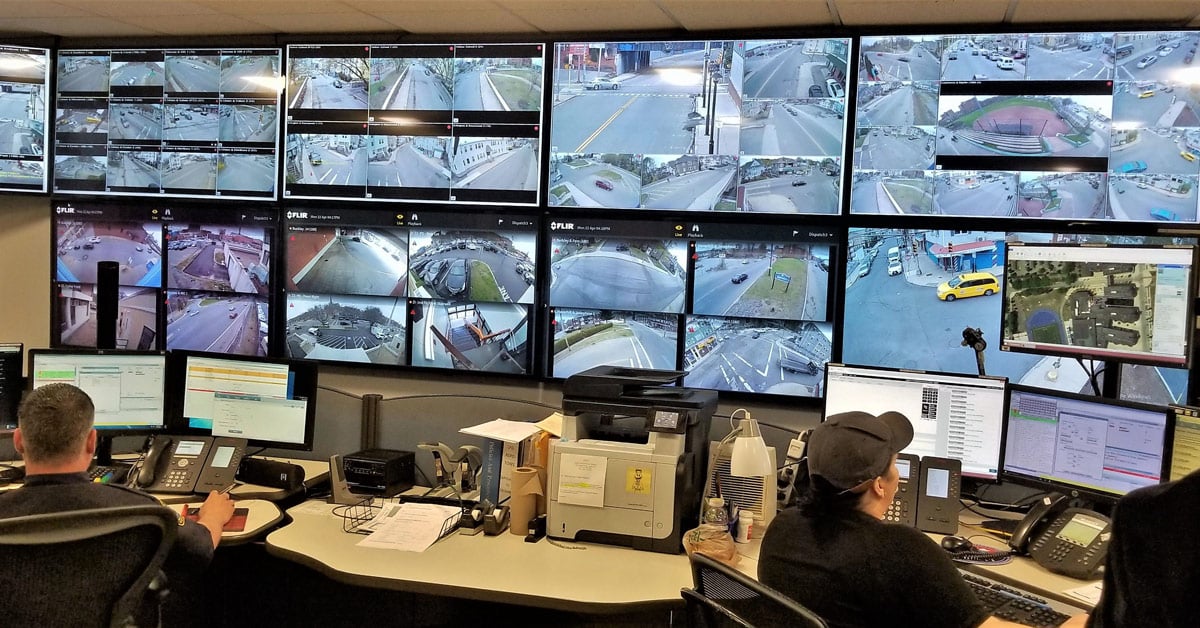The Benefits and Challenges of Radiometric Thermal Technology

Temperature Measurement or Radiometry is a technology that can provide benefits in a wide range of applications. Thermal cameras that employ temperature measurement features have enabled organizations to deploy solutions for security and protection, as well as predictive maintenance, cost effectiveness, firefighting support, game management, and search and rescue.

Thermal security cameras provide reliable intrusion detection and threat assessment, even in no-light conditions
Defining Temperature Measurement
Temperature Measurement can be defined as a collection of techniques designed to measure electromagnetic radiation, including the spectrum of visible light. The terms “thermography” and “Temperature Measurement” are sometimes used interchangeably, since radiometric measurements are essentially reading the intensity of thermal radiation.
The Benefits and Advantages of Radiometric Temperature Measurements
A radiometric thermal camera measures the temperature of a surface by interpreting the intensity of an infrared signal reaching the camera.
Adding radiometric functionality to a camera can give drone operators the ability to save the pictures for post-flight image analysis and accurately measure the temperatures of individual image pixels. The addition of radiometric imaging enables drones to capture temperature data in every pixel of an image. Drone operators can thus analyze and send detailed reports and images that examine temperature data in the entire image, delivering quantifiable results.
Radiometric thermal technology also plays a crucial role in the security and protection arena because it allows detection of objects or people when other imaging systems simply cannot provide good (information-rich) images. Specifically, radiometric cameras have proven invaluable for guarding physical and virtual perimeters around power plants, petrochemical facilities, and substations.

Thermal cameras for industrial inspections provide safe, accurate, non-contact temperature measurements for condition monitoring and predictive maintenance.
Advanced Features of Radiometric Thermal Cameras
Some of the benefits of advanced radiometric cameras include:
- Improved accuracy (typical performance on the order of +5 Co or 5% in high-gain state, varying slightly across the full operating temperature range)
- Moveable and resizable spot-meter (coordinates can be user-selectable to any location on the array)
- Additional spot-meter data (average, standard deviation, minimum, and maximum value)
- Digital data linear in scene temperature (in real-time operation, the pixel values in the digital data correspond to the temperature of the scene)
- Detailed temperature information (users derive temperature information per pixel from objects in the scene)
- Temperature precision (allows external scene parameters to be compensated for emissivity– a measure of the efficiency of a surface to emit thermal energy relative to a perfect blackbody source– and window transmission, to more accurately determine temperature)
- Image Metric Feature (enables users to query the camera for scene temperature data via serial command, such as maximum, minimum, and standard deviation for user-defined regions).
Some cameras that feature advanced radiometric technology even have the ability to compensate for variations in camera temperature. This allows users to receive output that has been stabilized and normalized, resulting in “temperature-stable video;” a scene with a given temperature will always correspond to a certain digital value in the video, independent of the camera’s temperature.
It is important to distinguish temperature measurements as surface infrared measurements because radiometric measurements should be restricted to optically opaque materials. Metals, and organic material (like people), are usually completely opaque, and radiometric measurements should be able to resolve their surface temperature.
Remote temperature sensing of a surface relies on the ability to accurately compensate for surface characteristics, atmospheric interference, and the imaging system itself. The surface characteristics that influence temperature measurement are surface emissivity and reflectivity at the infrared spectral wavelengths.
Technology in Use
Security for electrical substation is a top priority. One of the recent challenges utilities have faced is copper theft. With copper at an all-time resale high, substations have become an attractive target for intrusion, vandalism and burglary.
When copper is stripped, and stolen from substations, the cost for replacement isn’t the only consequence to be had from the security breach. Criminals aren’t known for their careful entry and exits when trespassing, and they will often do a great deal of damage to fences, gates and machinery in the process of stealing wire or pipe. The damages incurred on site after an intrusion can easily exceed the cost of the materials stolen. They may even be severe enough to render the substation inoperable, costing the utility thousands of dollars.
In response to these risks, many local utilities have determined that thermal security cameras with temperature measurement provide a proven solution to secure these vital facilities both night and day.
Substation alarms can be triggered by temperature rises at an electrical connection, insulator, cooling regulator, switch, or other equipment. Mechanical damage and corrosion are just some of the causes for temperature increases. For this reason, many utility companies have strict predictive maintenance programs in place and rely on operations personnel to use handheld thermal cameras to methodically inspect each individual component for temperature-related problems.
By deploying radiometric thermal cameras, utilities also have the option to conduct these inspections remotely from a central control station. With the data from these cameras, staff can more quickly pinpoint any problems for maintenance personnel, making inspections more cost-effective and time efficient. On top of that, the unscheduled failure of any of the thousands of components in an average substation can potentially cost the utility millions of dollars in revenue. However, proactively fixing these faults presents significant cost-savings for utilities each year.
Many Applications Reap the Benefits of Radiometric Thermal Technology
The affordability (and portability) of today’s radiometric thermal cameras means that almost any organization can enjoy the benefits and advantages provided by this highly useful technology. Many important applications have already benefited from deploying radiometric thermal cameras, including firefighting support, game management, search and rescue, and aerial surveillance. As its cost-effectiveness and feature set continue to grow, radiometric thermal technology should find its way into even more applications in the years ahead.


